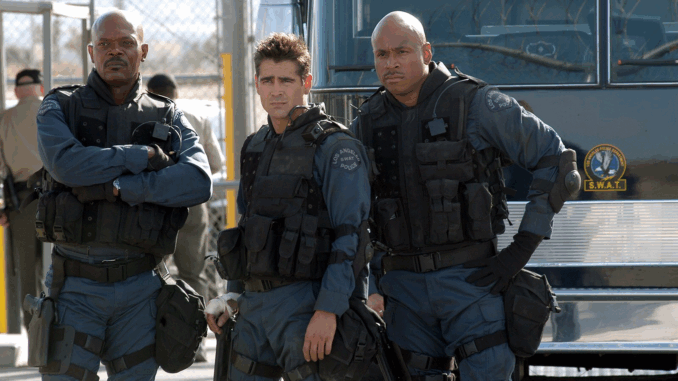
S.W.A.T. isn’t just another flashy cop show. With Shemar Moore’s commanding presence and high-stakes action scenes, it delivers consistent adrenaline. But beneath the surface of SWAT trucks and tactical vests lies an opportunity—one the show taps into occasionally, but not nearly enough.
What if S.W.A.T. leaned further into the real-life challenges law enforcement, communities, and society face?
H2: The Premise Has Power
H3: The Setup
S.W.A.T. centers around Daniel “Hondo” Harrelson, an LAPD sergeant who bridges the gap between his elite team and the communities they serve. That’s a powerful dynamic. Hondo’s identity as a Black police officer offers natural storytelling space to tackle racial injustice, institutional bias, and systemic tension.
H3: When It Works, It Works Well
Episodes like “Invisible” (Season 4) and “Stakeout” (Season 5) stand out for how they humanize issues like homelessness, police accountability, and racism. These aren’t just plot points—they’re real conversations reflected through drama.
H2: Where S.W.A.T. Falls Short
H3: Playing It Safe
Too often, S.W.A.T. opts for procedural comfort. One-off villains, hostage crises, and big explosions dominate screen time. That’s fine for popcorn thrills, but it leaves social commentary on the sidelines.
H3: Missed Opportunities
The show skirts around topics like:
-
Mental health among officers
-
Police reform and community trust
-
Gun violence and youth crime
-
Domestic abuse in law enforcement families
These issues are mentioned, but rarely explored with the depth they deserve.
H2: How the Series Can Improve
H3: Normalize Community Voices
What if each episode included narratives from everyday people—not just cops or criminals? Showcasing community leaders, trauma counselors, or former gang members adds texture and authenticity.
H3: Feature Internal Conflict
Highlight the ethical struggles cops face. Instead of always siding with the badge, reflect the moral grey zones: whistleblowing, excessive force, and institutional loyalty vs. justice.
H3: Collaborate With Real Experts
Writers could partner with social workers, legal scholars, and psychologists to develop storylines rooted in lived experience. Not only does this build trust—it educates the audience.
H2: Real-Life Issues S.W.A.T. Could Address Head-On
H3: Police-Community Relations Post-2020
The aftermath of George Floyd’s murder sparked a global reckoning. S.W.A.T. should address how departments rebuild trust—or fail to—years later.
H3: Mental Health Crisis in Policing
Law enforcement has a serious mental health crisis. Officers experience PTSD, anxiety, and depression at alarming rates. More episodes could follow that thread, without glossing over it.
H3: Systemic Racism
The fact that Hondo’s character is often punished for doing the right thing is worth digging into. What does it say about police culture? Let’s see more story arcs focused on internal systems resisting change.
H3: Gun Violence in Schools & Public Spaces
This is an ongoing American epidemic. S.W.A.T. can show the emotional and psychological aftermath of such incidents—not just the tactical response.
H2: Why Storytelling With Purpose Matters
H3: Media Shapes Perception
TV dramas influence how viewers see reality. When done responsibly, shows like S.W.A.T. can educate and challenge assumptions without turning preachy.
H3: Entertainment With Empathy
Audiences want connection, not just chaos. When viewers see their struggles reflected onscreen, it builds empathy. S.W.A.T. has the platform to create that bridge.
H2: What S.W.A.T. Is Already Doing Right
H3: Diverse Representation
From Hondo to Tan and Chris, the team reflects America’s diversity. That’s refreshing and necessary.
H3: Social Themes in Arcs
Season 4 dove into BLM protests, racial bias, and how good cops operate inside broken systems. These arcs proved the show could balance thrills with depth.
H2: Suggested Changes That Could Elevate the Show
-
Longer story arcs around social justice
-
Realistic consequences for bad policing—not always resolved in 42 minutes
-
More focus on families affected by crime and policing
-
Use of flashbacks or parallel narratives to show cause and effect
-
Guest stars from real communities speaking truth to power
H2: Counterarguments—And Why They Miss the Point
Some critics say S.W.A.T. should “stick to entertainment” or “not get political.” But ignoring real issues is, in itself, a political choice.
If the show is going to depict law enforcement, it can’t pretend to exist in a vacuum. Real lives are at stake—and real change starts with honest storytelling.
H2: Final Thoughts
S.W.A.T. has the foundation to be more than just an action series. It’s already flirted with depth, but now’s the time to commit. The fans are ready. The moment is right. And the platform is huge.
This isn’t about being “woke.” It’s about being responsible.
We don’t need more explosions.
We need more truth.
🙋 5 Unique FAQs
Q1: Does S.W.A.T. already address social issues?
Yes, occasionally. Episodes in Season 4 and 5 have touched on racism, mental health, and corruption, but often briefly.
Q2: Is S.W.A.T. based on real police units?
Yes. It’s loosely inspired by LAPD’s real S.W.A.T. teams, but the show takes dramatic liberties.
Q3: Can the show influence real-world change?
Absolutely. Media influences perception, empathy, and policy conversations.
Q4: Is Shemar Moore involved in shaping storylines?
As an executive producer, Moore has advocated for more socially conscious themes—especially around race and justice.
Q5: What’s the risk of tackling real-life issues on TV?
Some viewers may feel alienated or accuse the show of “politicizing,” but avoiding these topics does a greater disservice.
